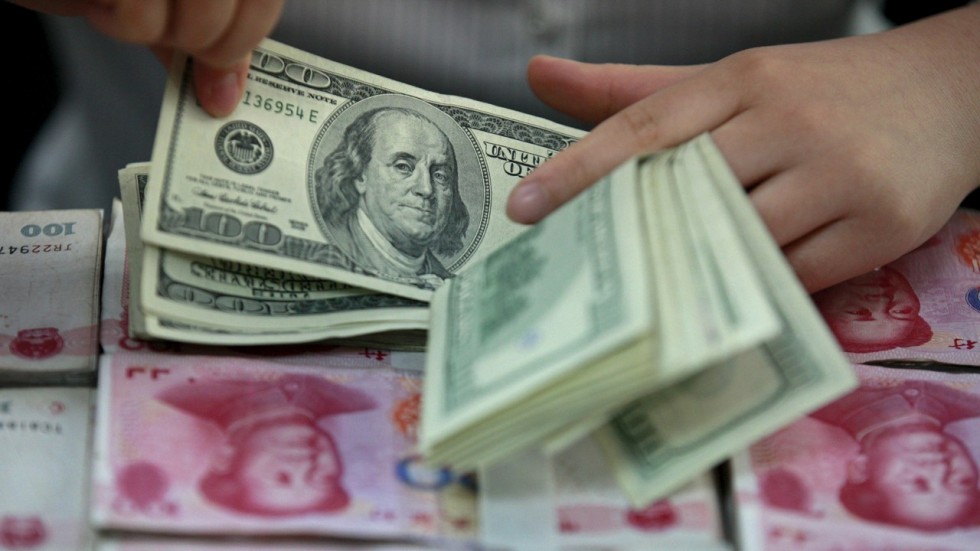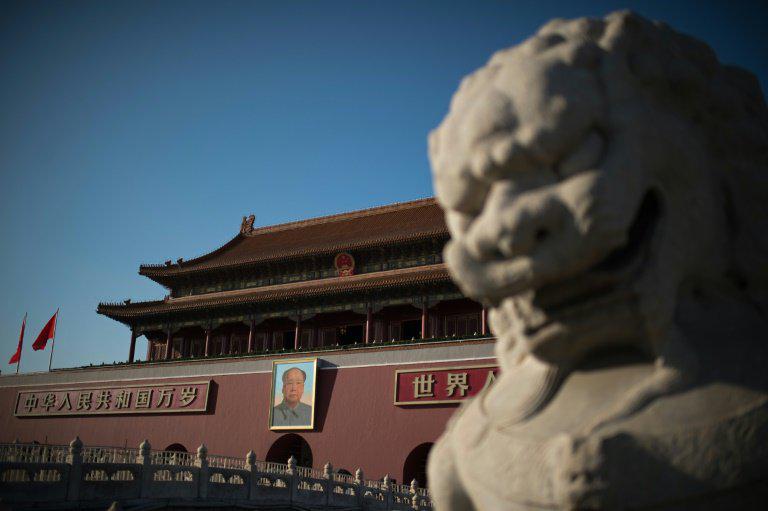

Heavy demand for US$2b billion China sovereign bond issue
Debt sale is expected to serve as pricing benchmark for upcoming bonds from state-owned firms
國際三大評級機構(標普、穆迪、惠譽)被打臉.外國經濟學者與國際金融專家始終弄不懂中國的國際金融戰略意圖? 將慾取之必先取知西方國際金融投資者90% 以上皆為投機客他們憑藉專門的經濟理論及國際金融操作實務藉由國際間銀行外匯顧問及某些政府官員的協助之下在國際金融圈內殺進殺出賺足了利潤拍拍屁股走人.中國政府將會實施制裁讓它們消失.
China's First Dollar Bond Since 2004 Set to Shake Up Market.
中國美元主權債券,即中國政府在國際市場以美元所發行的政府債券。美元RegS形式高級債券), 成功反擊美國三大國際評級機構
此次發債,中國完全拋開三大評級機構,讓市場自行評估風險,顯然市場比三大評級機構對中國經濟更有信心。你們台灣的財團錯過此一機會只有等待下一次.
此次重啟主權外幣債券發行並沒有做第三方評級。在認購訂單階段,債券受到追捧,霸氣回應今年9月標準普爾公司對中國的主權信用評級的調整。當時,標準普爾公司將中國的主權信用評級從AA-降到了A+,展望由「負面」調為「穩定」。
金融大鱷,大家必然想到的是索羅斯、保爾森、高盛、摩根。。。但在金融市場,有些大鱷可能比索羅斯們還要致命,他們無需花一分錢,只要動動嘴皮子,寫寫報告就能攪得全球金融市場一片腥風血雨。
他們就是國際評級機構。在2012年的歐債危機期間,其落井下石的評級行為,讓整個歐洲吃盡苦頭,甚至險些造成歐盟的分裂。今年,他們又將矛頭對準中國,下調了中國的主權評級。但這一次,他們徹底失算了。
20171026日,我國財政部在香港特別行政區發行了20億美元的主權債,獲得了全世界投資者220億美元的火爆認購,且票面利率只比美國國債高4-10個基點(1個基點=萬分之一點)。
國際信用評級機構惠譽日前發佈報告,給予亞洲基礎設施投資銀行AAA的最高信用評級,評級展望為穩定。這是亞投行在201706月獲得穆迪最高信用評級後,再獲得三大國際評級機構之一的評級機構最高信用評級.
此次20億美元的主權債券美元包括5年期的10億美元和10年期的10億美元。根據財政部的統計,主權債券總申購金額約為220億美元,達到發行金額的11倍,遠超市場平均水準,其中35%的資金來自亞洲以外的區域,包括歐洲、離岸美國市場等。這是13年來,中國財政部首次在離岸市場發行主權外幣債券.西方主要的國際金融投資機構大肆加碼認購,達到220億美元之譜.
國家財政部副部長史耀斌表示,此次發行美元主權債券規模不大,融資並不是目的。發行美元主權債券有助於提升海外市場對中國經濟和主權信用的信心,並積累主權信用數據,推動國際投資者更好地認識中國、投資中國。中國由此發行美元主債券就可以判定投資者是否為國際金融投機客?
亞洲以外地區投資者獲分配比例超過50%,最終定價接近已開發國家收益率水平,找到了中國相關債券定價的新邏輯,充分顯示了國際投資者對中國經濟發展的信心。
記者問:此次財政部發行20億美元主權債券,是2004年以來再次發行主權外幣債券。請問此次發債是出於什麼考慮?
答:長期以來,中國堅定不移地擴大金融業開放,不斷取得新的重大成就。金融業在保持快速發展的同時,堅持以服務實體經濟為導向,有力促進了更高層次開放型經濟發展。黨的「十九大」提出,我國經濟已由高速增長階段轉向高質量發展階段。暌違13年,中央政府再次面向國際投資者發行主權外幣債券,是站在新的歷史起點上推進金融業對外開放的重要舉措,對擴大金融業雙向開放具有重要意義。
首先,有助於提高金融業對外開放水平,提升金融服務實體經濟的能力。此次發行美元主權債券,將重啟國際資本市場融資渠道,為境內外主體增加重要的投資和避險工具,豐富國際資本市場金融產品,進一步增進與國際資本市場的密切聯繫,提升金融業開放水平。同時,中國政府以主權信用融資,有助於為境內主體形成良好示範,引導境內主體合理利用國際金融資源,支持實體經濟發展。
看起來以美國為首的信用金融評比機構再也不能˙對中國笛金融制度比手畫腳 中國今後會自行創設金融評比機構對於國內外展開服務.
China's First Dollar Bond Since 2004 Set to Shake Up Market.
It’s been a record year so far for Asian dollar bonds, with unprecedented demand from within the region spurring a slew of debut issuers and prompting some deals that raised questions about due diligence. Still to come: the most important sale yet.
China’s government itself is planning a return to the market for the first time since 2004, even though it hardly needs the funds given its ample ability to raise cash at home. Instead, the $2 billion issue pending from the Ministry of Finance is seen by market players as a move to pull down the borrowing costs of Chinese state-owned enterprises.
With the internationalization of its own currency on a longer timeline than originally anticipated -- thanks to the currency devaluation that shocked global markets in 2015 -- SOEs such as China’s energy and transport companies are likely to be tapping the dollar bond market for years to come to help fund their international operations. And with President Xi Jinping encouraging expansion abroad through his Silk Road development project, there’s set to be plenty of financing needs.
"China’s upcoming dollar bond will become the most important Asian benchmark bond," said Ken Hu, chief investment officer for Asia-Pacific fixed income at Invesco Hong Kong Ltd. "It will help reprice Chinese dollar bonds -- especially investment grade and SOEs."
China is only likely to proceed if the interest costs are less than those of South Korea, according to analysts including Anthony Leung, director of Asia-Pacific credit research at Wells Fargo Securities LLC in Hong Kong.
Tight pricing
China is expected to target a 60-to-70 basis point premium over U.S. Treasuries, a number of analysts said; South Korean five-year dollar debt spreads averaged around 67 basis points last quarter. Tighter pricing would be a mark of success given South Korea’s long term foreign currency issuer rating is two notches higher than China’s according to Moody’s Investors
Service.
The Ministry of Finance didn’t respond to a faxed request on its pricing target and the timing of the bond sale. The government probably decided to come to market now because many of the country’s SOEs have issued debt in dollars but lacked a sovereign benchmark for their securities, market participants say.
"SOEs need to fund themselves in the open market, but it doesn’t mean the government cannot help set a benchmark to give them a hand," says Leung at Wells Fargo. If China succeeds in its tight target for pricing, the sovereign sale could end up bringing down borrowing costs for Chinese issuers by about 30 basis points, Leung said.
Domestic players are keeping a watch on the sale, having witnessed rising yields thanks to policy makers’ initiative to reduce leverage in the financial system. While China’s government has no need of extra dollars, given its $3.09 trillion stockpile of foreign-exchange reserves, the offshore bond will offer a marker for international demand just months after a new channel for buying mainland debt opened up via Hong Kong.
New Benchmark
"After such a long pause, the pricing this time would be interesting, especially given the overseas investors’ attention to China’s leverage issue and the Moody’s downgrade," said Shen Bifan, head of research at First Capital Securities Co.’s fixed-income department in Shenzhen. "Having said that, it’s also worth noting given the very small amount of offering and non-regular sales, it may not be an efficient price discovery.”
Yields on China’s onshore 10-year government bonds have climbed about 60 basis points this year, to 3.61 percent on Friday. U.S. Treasuries with similar maturity have dropped about a quarter percentage point, to 2.20 percent.
The $2 billion expected issue compares with some 2.4 trillion yuan ($366 billion) worth of domestic central government debt issuance so far this year, according to data compiled by Bloomberg. China has a total of 12.3 trillion yuan of bonds outstanding, and still has $100 million of dollar bonds due in 2027 that were sold in 1997 and a $100 million of dollar century note due 2096.
Encouraging Others
Another potential effect of China’s issuance could be to spur other Asian countries to come to the dollar market, analysts said. Hu at Invesco said investment-grade companies in Malaysia, South Korea and Thailand, as well as their governments, could be encouraged if China secures beneficial pricing.
The expected new sale is already starting to reduce yields among some Chinese issuers, according to Jethro Goodchild, the Singapore-based head of Asian credit at Aviva Investors. State-run oil giant China Petroleum & Chemical Corp. priced a four-part dollar debt sale totalling $3.25 billion earlier this month at spreads tighter than a comparable offering back in April. He sees further tightening in quasi-sovereign debt spreads after the sale.
Bank of America Merrill Lynch expects SOE oil bonds to outperform, getting a lift from the sovereign offering to narrow their spread gap with the U.S. peers, according to a Sept. 13 note from the bank.
"Sovereign bonds are to a certain extent are marketed like companies -- there’s a story to tell and sell," said Todd Schubert, head of fixed-income research at Bank of Singapore, the private banking unit of Oversea-Chinese Banking Corp. "It will be an opportunity for the Chinese government to create the image in investors’ minds that they have a coherent and well-articulated plan for the country’s economic growth and fiscal stability."


















